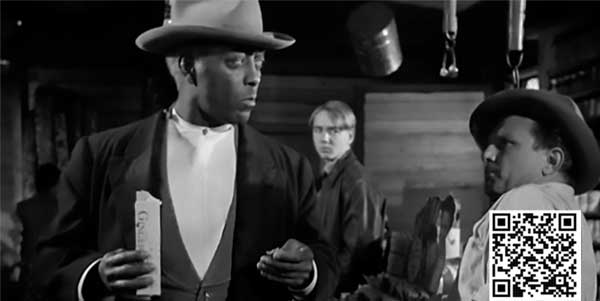August 28, 3pm, Depicting Black Militancy: Intruder in the Dust (1949)
by
Depicting Black Militancy
August 29, 3pm, 2021
Intruder in the Dust (1949) Clarence Brown, 1h 27m
Register for Free Online Screening and Discussion
Lucas Beauchamp (Juano Hernandez) is a strong, proud African-American man accused of murder in 1940s small-town Mississippi. As the town’s white residents prepare to lynch him, a teenage boy named Chick (Claude Jarman Jr.) whom Beauchamp had once saved from drowning becomes convinced of the man’s innocence, and races to discover the identity of the real murderer before it’s too late. This film, adapted from William Faulkner’s 1948 novel, was made on location in his hometown of Oxford, Mississippi.
As one of the four big “race issue” films Hollywood produced in 1949, MGM’s film occupies a central place in the history of screen representations of blacks following the Second World War. Produced on the heels of independent film Lost Boundaries (Alfred Werker, 1949) and studio releases Home of the Brave (Mark Robson, 1949) and Pinky (Elia Kazan, 1949), Intruder in the Dust had perhaps the most impressive pedigree, adapted as it was from the novel by Pulitzer-prize-winning author William Faulkner. The soon-to-be blacklisted writer Ben Maddow provided the screenplay and Tennessee-raised Clarence Brown, a veteran of the studio system with a career stretching back to the 1910s, produced and directed it. When the film was released at the end of 1949, it garnered largely positive reviews, both in the general press and among film writers. In his review for the New York Times, Bosley Crowther praised Brown’s “brilliant, stirring” film that “slashes right down to the core of complex racial resentments and social divisions in the South” and “cosmically mocks the hollow pretense of ‘white supremacy’” (19). Edwin Schallert of the Los Angeles Times called it a “grimly courageous picture” (11), while the reviewer for the racially conservative The Chicago Daily Tribune noted it was “a blunt sketch of problems in race relations” that was both “probing” and “accurate” (“Mae Tinee” B7). Theorist and practitioner Paul Rotha, in a private letter to director Brown, commended the film for a “sincerity that we seldom see on the screen”; amateur filmmakers were advised to study the film for “effective examples of the dramatic uses of sound—and silence” (D.C. 1).
 Panelist: André Seewood is a multiple award winning independent filmmaker, writer and musician. He is the co-founder and former co-editor of FILM THREAT Magazine and a distinguished recipient of the Dennis Turner Memorial Film Studies Scholarship from Wayne State University. He is the author of SCREENWRITING INTO FILM: Forgotten Methods & New Possibilities (2006), SLAVE CINEMA: The Crisis of the African-American in Film 2nd Edition (2011) and (DISMANTLING) The Greatest Lie Ever Told to the Black Filmmaker: Collected Essays on Film (2015).
Panelist: André Seewood is a multiple award winning independent filmmaker, writer and musician. He is the co-founder and former co-editor of FILM THREAT Magazine and a distinguished recipient of the Dennis Turner Memorial Film Studies Scholarship from Wayne State University. He is the author of SCREENWRITING INTO FILM: Forgotten Methods & New Possibilities (2006), SLAVE CINEMA: The Crisis of the African-American in Film 2nd Edition (2011) and (DISMANTLING) The Greatest Lie Ever Told to the Black Filmmaker: Collected Essays on Film (2015).
